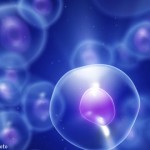For the study, he and colleagues recruited 10 young men and randomly assigned half to a high-intensity tactical training program, akin to the rigorous exercise regimen of Navy Seals, and the other half to a traditional, moderate-intensity training program. Both programs combined endurance and resistance training three times a week for 12 weeks. Researchers collected plasma from the volunteers at weeks 0 and 12, just before and immediately after they exercised, and then again after four weeks of de-training, during which they didn’t exercise at all. A research algorithm used the cell-specific pattern of DNA methylation marks—akin to a molecular fingerprint for each cell type—to identify the source of the cell-free DNA.
The analysis, Dr. Rodrigues says, showed that most of the cell-free DNA was being released when the volunteers exercised and in amounts proportional to their workout intensity. The bulk came from their neutrophils though a significant fraction originated in their dendritic cells and macrophages; careful measurements suggested ETosis was the likely source of that expelled DNA. Over time, however, the overall amount of released cell-free DNA decreased for the high-intensity training group but not for the traditional-intensity group.
Multiple Effects of Exercise Training
“What’s interesting is that reduction [of released cell-free DNA] seems to be driven by the dendritic cells and the macrophages, but not the neutrophils,” Dr. Rodrigues says. The neutrophils’ propensity toward ETosis wasn’t impacted even by high-intensity training. In other words, fewer macrophages and dendritic cells were committing themselves to the cell death pathway over time. The gradual reduction suggested the latter cells were becoming less activated by, or perhaps less sensitive to, inflammatory signals via an as-yet unclear mechanism.
“If the cells are becoming less sensitive to inflammatory signals, that could definitely be beneficial in patients with autoimmunity,” Dr. Rodrigues says.
The packaging and ejection process that occurs during ETosis can include DNA from the cell nucleus only or from both the nucleus and the mitochondria, the cell’s powerhouses. When Dr. Rodrigues and colleagues sequenced the ejected cell-free DNA, they found the vast majority was nuclear in origin, suggesting the neutrophils’ mitochondria were still intact and giving the cells enough time to finish their immune surveillance duties before expiring, a finding consistent with what’s known as “vital” ETosis.
The finding also suggested that mitochondrial DNA from neutrophils, which can readily activate dendritic cells and macrophages in a pro-inflammatory way, wasn’t doing so in this case.

